悉尼大学 Innovation Through Design (如何创新 如何设计 创造力 软件工程 人机交互 如何打造好产品)
week1-2 Introduction to design thinking
-
design
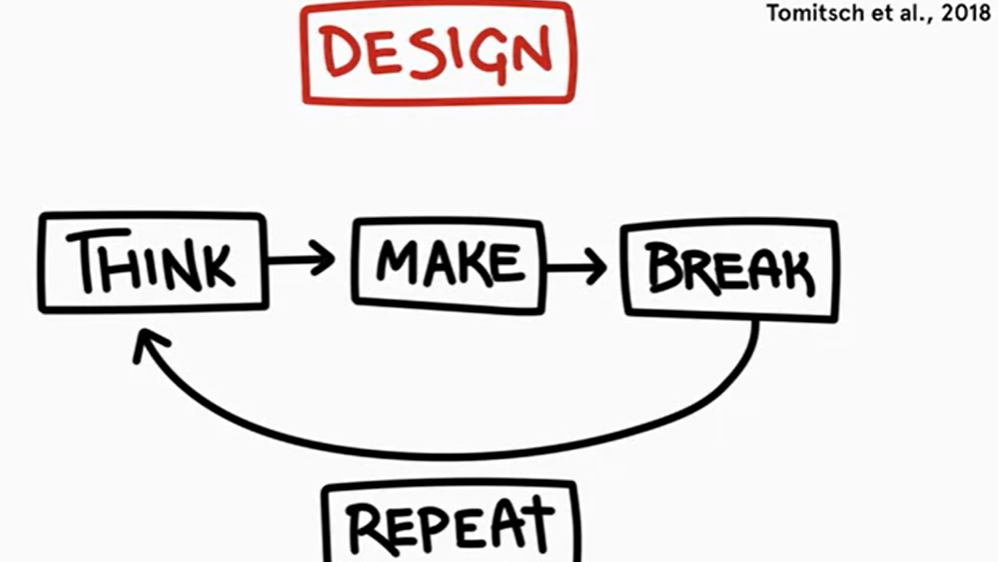
Design thinking: Matching needs with feasible technology and viable business strategy and convert into customer value and market oppotunity.
Enabling the intergration of needs with possibilities and requirements for innovative business success.
Solution-focused√ action orientated
problem-focused×
-
design innovation
more than just coming up with new ideas, making things look good
Changes that lead to a better world for everyone while maintaining the health of our planet.
the thinking part:
Design requires learning about contexts by asking the right questions.
the making part:
Building prototypes as tangible representations of new ideas.
the breaking part:
Testing potential solutions, and listening to feedback from users.
the repeating part:
Rather than investing a lot of time in each step, it is more productive to go through the process as quickly and as often as possible.
What is human-centred design?
Look at the interaction between people and the products.
In some cases, the user might not be the consumer of the product at all.
-
A key component of human-centered design :
getting to know your user or customer.
①interviews ②questionnaires ③existing data that is available to you
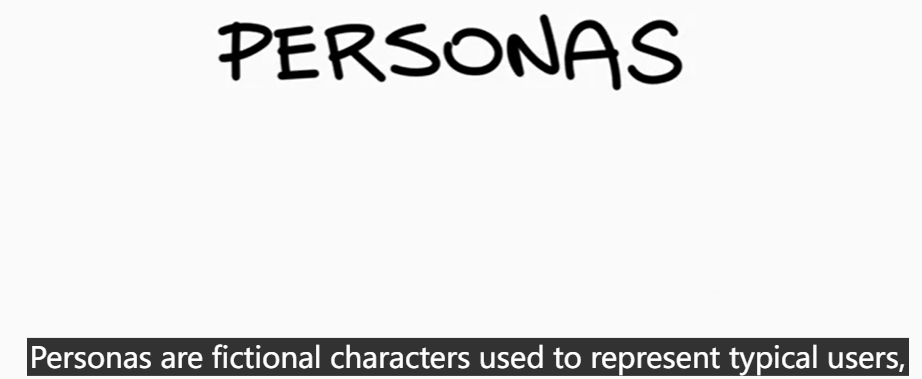
customers or other stakeholders. Personas are created through the data that you have collected. They distill the information that is most pertinent to the design issues at hand.
Personas are fictional characters, however they are created through data that is collected to better understand your user or customer.

your considerations beyond the needs of the typical and conventional user.
focus on a particular target group and type of user,understand their specific problems, needs, and motivations.
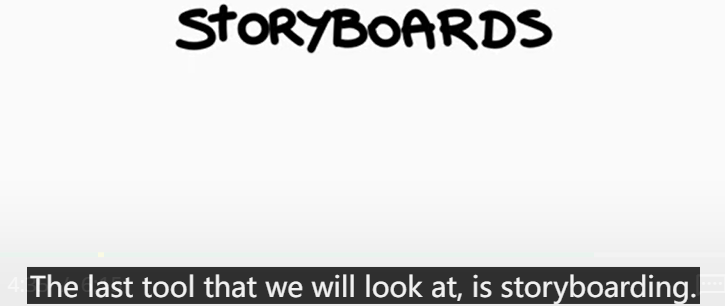
storyboards are used to visually explore the interactions between people and products or services.
Use a series of illustrations to tell a story.
Focus the viewer's attention on the important parts of the scenario.
Translating insights into innovative opportunities
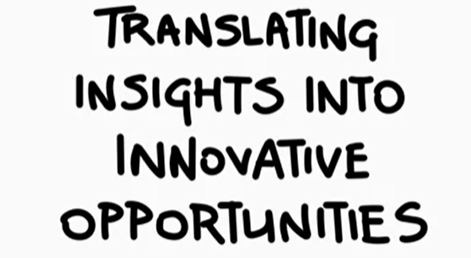
how you can use the insights that you develop from these tools and translate them into innovative opportunities
Human-centred design in the real world
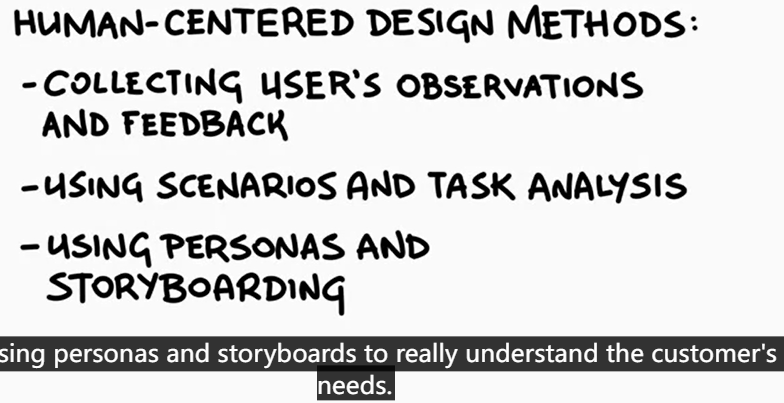
Introduction to design making
-
design making
building an idea, and seeing it brought to life
Data collected during the design thinking phase→(design making)→concepts and prototypes[tangible representation of the solution]
01 a design concept, a prototype, a minimal viable product
02 a specific scenario, the entire user interface, one feature built as a technical proof of concept
Design making: concepts and prototyping
-
effective design making
depends on the quality of data !!!
-
prototypes(eg.low-fidelity prototypes and mock-ups)
represent concepts
the creation of tangible representation of an envisaged idea
-
concept generation
sketching: visually represent the physical aspects of an idea
[cheap, quick to materialize] →completely disposable and replaceable
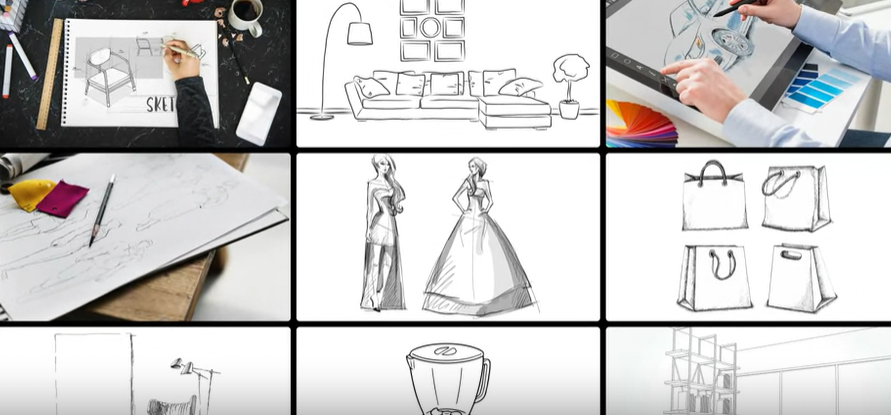
try to verbalize an idea×
represent through a sketch√
facilitating a dialogue between your thoughts and your sketch
-
sketches link to
-
artistic merit×
-
facilitate discussion, understanding, technique√
more relevant during the idea generation phase
Structures[early sketches]: menus, tabs, headings, pages
Wireframe: difficult for customers to understand; useful to get feedback from designer,expert
Low-fidelity prototypes :
allow a quick exploration of ideas early in the design process.
can be used to
-
reflect on a design
-
discuss design solutions within a team
-
get feedback from prospective users through usability testing
use tangible materials to explore how people could interact with the final product or service
do not represent the final visual design
prototypes(should represent the actual scale of the final product)
Mock-ups:
visualize the detailed representation of the envisaged product
made early on in the design process
allow for the exploration of specific form factors: interactions betweeen users and the design/process
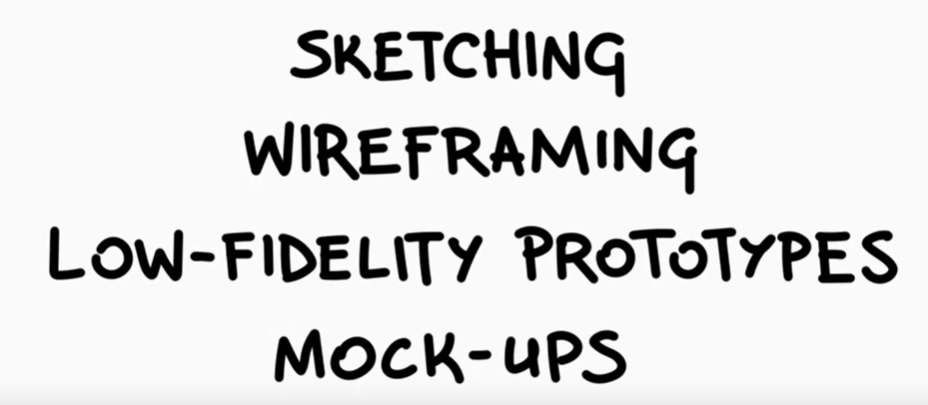

week3 Creating prototypes
Prototype:
-
a physical model or simulation of a final design
-
not about conceptualizing your design,but about experiencing it
-
comes after you've spent some time conceptualizing your design
-
a low-cost high reward activity
-
can provide insight into how your design will be experienced by its users
-
reduces miscommunication between teams and helps you catch mistakes early
Prototype come from
-
personas
-
sketches
-
wireframes
1.building prototypes
2.learning from them or breaking them
3.then rebuilding them
1.refine
2.focus
3.evolve
-
a few things to consider when approaching building a prototype
-
audience:
initally: yourself or your team
end goal: users, the public, a client, an investor
→plan the fidelity physical prototypes:
methods: 3D printing, laser cutting
(relatively cheap and accessible, provide you with an object that might look and feel similar to the final design)
-
Physical computing devices
small computers: allow you to prototype digital functionality, programmable, can interact with smart phones, websites, environment
-
popular rapid prototyping platforms:
Arduino and Raspberry Pi
You should prototype only what you need.
All prototypes are incomplete.
You reduce the risk of wasting your time, materials and energy
if you discover something new along the way
and want to change it in the overall design
-
Wizard of Oz prototyping
a rapid prototyping technique
an AI based design concept or explore the experience of working with robots
create a mock-up of a function
that would be difficult to develop quickly
designer: simulate function/output when users interacting with prototype
users: as if the function was the result of a more complex system
instead of actually implementing this complex function,
simulate its function and this allows you to demonstrate the experience of working with more complex or even future technologies
Idea generation and prototyping in design projects
Idea generation can come in many forms.
depends on:
-
what the problem is
-
the size of the budget obviously that we're working to as well
-
ultimately still a creative brief.
-
pen and paper:(write things down)
low-tech,ancient,origins
easiest,quickest
Keep a little notebook next to you.
Write them down, generate this book of ideas that you can sometimes attach to a client.
-
work in multidisciplinary teams; designers, teaming with developers, teaming with project managers.With that package, we co-develop with clients, solutions, and ideas to the problems.
-
simply smaller projects, just two people. You can get two people, sitting in the corner of a coffee shop just coming up with ideas.
-
taking an idea into concept
1.identifying the key message that you're trying to communicate in that idea
2.have all our ideas gathered, post-it notes scattered across the wall, we begin grouping, refining, combining, and re-framing these ideas into groups.
3.form idea territories(overarching concepts that have multiple ideas in them)
How we know an idea is innovative
all down to
the feedback that we get from the people around us
Understanding what is the right concept to work for:
sit down and tear these ideas apart, really poke them, stress test them, see what's right, see what's wrong
Have the ideas that are safe first as groundwork and foundation
so you can support that innovation
where to put your innovations:make that road really smooth.
work through the pros and the cons
and sometimes we create a hybrid concept where we get the best from a few
and narrow the direction down to one final concept that's the lead for development.
【next stage】take a concept and build it out into a UI or a prototype
that we can then take to uses and start testing it with them
begin to figure out what's the purpose of a prototype
if it's on the money for solving their problem
or if we've strayed a bit too far from what they expected of the solution.
help us refine the concept and refine the UI into the right solution.
Never are going to actually have a solution that works for every single thing that's out there.
You need to be able to adapt
and that's the core thing of research and prototyping;
Adapting to the feedback and the situations that you have!
week4 Introduction to design breaking
breaking what a design looks like or how it might work.
By segmenting design into steps and methods,
it becomes possible to think like a designer.
it might be necessary to let go of an idea or a concept to make room for even better ideas to emerge. To break a design solution requires embracing failure.
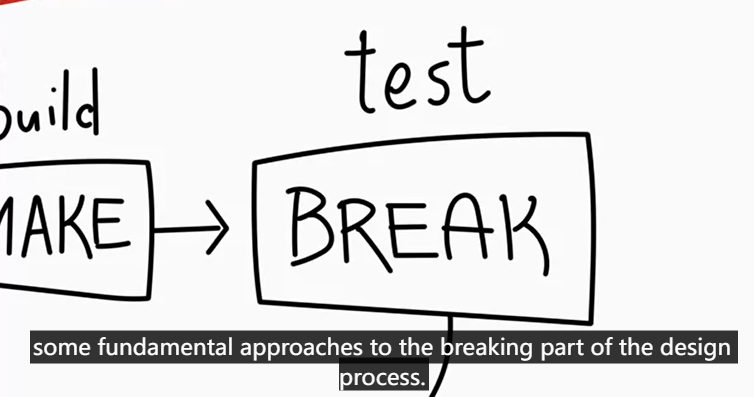
How to evaluate concepts
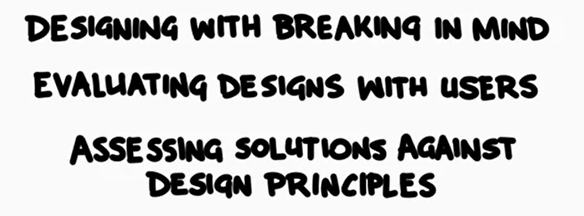
step1:designing with breaking in mind (requires embracing failure) .
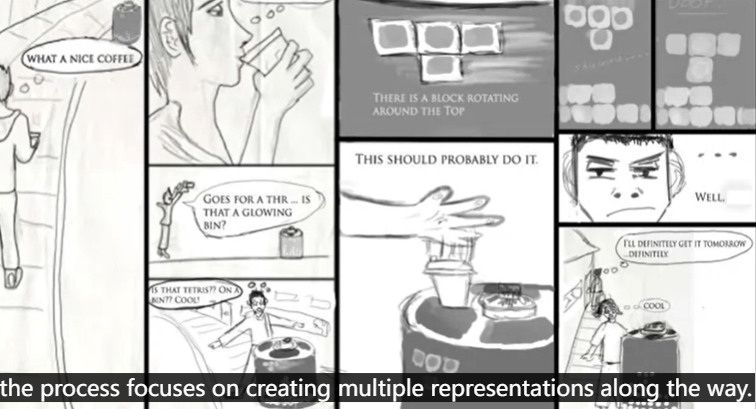
Each duration adds a level of fidelity meaning it might include
more refined features,
more functionality
or use more polished materials.
-
From those failures, they learned how to improve their approach.
Constantly breaking their concept sped up the design team's process of finding a new successful solution.
step2:evaluating designs with users
ensures that people will understand how to use a product or service.

step3:assessing solutions against design principles
(is a quick and easy way to avoid fundamental design flaws).
Alan Cooper, an American interaction designer
It's known as hiding the ejector seat levers.
-
The principle suggests that
not only should interface controls that
provide different functionality be designed to clearly look different,
but the design should also be used to
assure that a user doesn't inadvertently trigger the wrong action,
especially if an action has severe consequences
such as ejecting a jet fighter seed
or triggering a statewide missile attack alarm.

Common evaluation methods
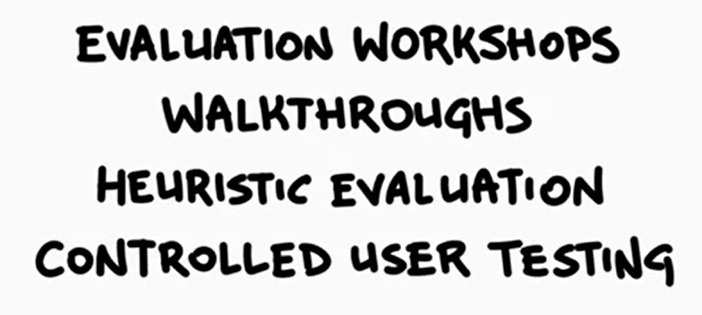
Some methods are better to use early on in the design process to test designs of low fidelity.
Some are better at later stages when prototypes are more refined and of higher fidelity.
-
distinction between methods :
whether they involve users or experts.
User-based evaluation can identify usability issues.
(whether people will understand how to use a product or service.)
Expert-based methods are quicker and cheaper to do.
(expert designers assessing a design solution against certain criteria.)
-
best done
before involving users to pick up any severe issues before time is spent on testing.
evaluation methods are used beyond assessing usability
to focus on other aspects of user experience such as delight and joy.
Identifying and using design principles
the most important lesson is to break design solutions as early and as often as possible.
-
principles("The Design of Everyday Things")
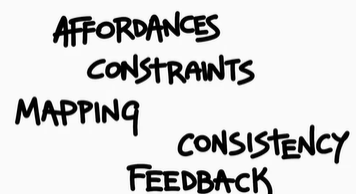
1.affordance:Norman describes affordance as
the perceived and actual properties of an object
that determine just how the thing could possibly be used.
-
you look at an object and by looking at an object, you know how to use it.(chair,push button……)
the principle of affordance is therefore really powerful
because it allows us essentially to interact with the world around us.
2.constraints:they need to be considered in order to
reduce the number of possible actions and to avoid selecting invalid options.
-
an invalid option:
best case:leads to an error message
worse case:lead to fatal errors in operating a machine such as an airplane or a medical device.
Constrains ensure that there is as little chance as possible for the users to make errors
Different types of constraints : logical, cultural, and physical
Logical constraints: draw on our knowledge of how things logically work.eg.screw
Cultural constrains: draw on things that we learned from growing up in a specific environment.eg.cars drive
physical constraints ( the most common type ) :

Designing the affordance of an object can support the presence of physical constraints.(key)
3.mapping: used to describe the relationship between control elements and their effects in the real world.
used in things like volume and brightness.
be found in the design of lift buttons, which are commonly aligned vertically to match the levels of the building.
4.consistency: ensures that once we learn how to operate an interface,
we can apply the same to another interface.
eg.shortcut operations in software applications.
5.feedback:a mechanism to provide users with information about the result of an action.
shows that an action has been executed correctly or if there was an error.
used to show what the current status is of the interface and which operations are possible,
can be delivered through things like sound, highlighting, and animation.
Experimentation and testing in the industry
The only way to really dig down and resolve a design, is to build a prototype and put it to its merits.
The first is finding the things that we want to test on the product itself.
Defining that ahead of time will make sure that you don't get off topic.
make sure that you're targeting the right demographic!
identifying the ones that are actually having the problem that you're trying to address!
The primary step for testing a product, is number one, understanding which metrics are you measuring in the first place.
Understand that we're measuring the right metric to get to the right solution.
Set number two, once we're confident that we're looking at the right metric,
that's when we start to think about,
"Well, how can we move that metric in a way that's good for us?"
it will inform the design decisions that we make,
and it kind of acts as a goal for us to understand are we succeeding in the project.
how quick is it for a help seeker that's come to the portal to go
from landing on the page to raising a request and getting in contact with the people,
think how can we make it quicker for them to search through stuff?
How can we better surface our request-type?
How can we make it easier for them to find the right request-types,
so that they know that they're asking for help from the right person?
think how can we make it quicker for them to search through stuff?
start by looking at how, what it's doing,
what are the customers doing,
where they're going,
what are they clicking on,
are they starting to buy a product from where are they falling out?
test fast, test often and test quickly
test as early as possible really
the people that I normally test with will be anybody that I can find.
Anybody could be someone using my product.
But for another designer on my team
who may be in charge of the agent experience,
they need to be more refined in who they are speaking with.
So they'll be looking at lists of customers
who are specifically agents and they'll ask themselves things like
"Has this agent been working with the product for very long?"
"What did they understand?"
"What's their level of expertise with the product?"
Dealing with failure is part of a designer's job.
It's only way to know what to improve upon.
It's key to iterating and working towards, you know, an innovative solution in the end.
in order to get to the right design,
we need to constantly be experimenting with
what we have and testing it to make sure
that we are coming to the right solution for the problem that we're trying to solve.
week5 Introduction to design repeating
Iteration: the last step in a typical design process
what this means and why it is important to repeat the steps of the design process
×trying to get the entire design done in one linear process
√create an initial version quickly, which can be reviewed or tested
-
go from low to medium to high fidelity versions of a design
The first idea is usually not the best idea.
-
test multiple ideas while at the same time
-
moving towards a more refined design with every iteration
the design innovation process is never linear.
It can't exist with other steps.
helps us to create more original and higher-quality designs.
by repeating the design process is more successful than striving for that one perfect solution.
those focusing on quantity, had come up with much more interesting and novel works,
than those striving to develop a high-quality submission.
Embrace failure: Not getting fixated on one idea,
try out many different ideas quickly reflecting after each attempt,
and that way producing overall higher-quality works.
Recap of all modules - Why? Where? How?
1.design thinking
the principles of human-centered design
some useful tools such as personas and storyboards
start any design process by developing a deep understanding of
the people we're designing for
a difference between users and customers
understand the problem situation or the context of a design
2.design making
creating tangible representations of a design
these representations can capture a specific scenario,
the entire user interface, or just one feature,
built as a technical proof of concept.
some of the methods: sketching, low-fidelity prototyping, and mock-ups
grounded in the insights gathered from the design thinking step
3.design breaking
challenging designs by reviewing or testing them.
①simplest form:
be done by the design team itself;
a process of reviewing than testing
②more time-consuming and resource intensive:
be tested with potential users or customers;
more valuable as it delivers insights into the perspectives
from the people we are designing for
approaches: Ⅰ.design with breaking in mind,
Ⅱ.evaluate designs with users
Ⅲ.assess solutions against design principles
4.design repeating
all of these steps are interconnected
the fidelity of design representations increases in each iteration
sketching: used early on in the design process to find the right design
prototyping: then used to get the design right

Industry expert tips on design and innovation
1.you're fresh, so experience as much as you can, culturally, from landscapes, from different perspectives, go out there travel because when you come up with an idea, and you draw with that from within
2.going into design these days is be entirely okay with failure. You're going to fall flat on your face. And trust me, I know what it's like to fail at that level. But at the same time I've developed from that. I've learned from that, and I've grown. And as long as you're okay with those huge failures, you're going to become successful moving forward in life. Don't let them get you down.
3.a person who is clearly intelligent, clear thinking, and a great communicator.
4.embracing absurdity. Just be loose and have fun. You never know what you could bring to the table that other people aren't thinking of just as a result of just letting go a little bit.
5.understanding the importance of metrics when you are testing your designs. Because it's really easy to take qualitative feedback and let that be the only thing that you think about. But looking at the nitty gritty and looking at the metrics that you measure, they have such a big impact on your design that making sure your measuring the right metrics can really help you take the right step forward.
6.When I first started I realized it was an apprenticeship and that all my study was just the beginning and now I had to learn. And at that time, I wish I knew everything, but it just takes time and experience.
7.you couldn't do it all yourself. There's so many experts out there that have such deep knowledge in spaces and areas, you're not going to have the ability to understand. And drawing upon that expertise and knowing how to draw upon it is critical.
8.Knowing what to work on is quite a art, but also focusing on the right things to work on.
9.knowing that even if someone says that you can't do something, if you have the motivation to go and tackle it yourself, then you can totally do it.
10.The most important thing I learned is that if you build it, they will not come. It takes a lot of research. It takes a lot of talking to users to make sure that the product or the service you make is relevant, it's needed basically, and they're happy wanting to use it, essentially.
11.Be proactive. Be out there all the time. I am, when I first started, I used to look at people's calendars to understand what are the types of meetings they're having. Like, what are they talking about? How do you, because there is no set way. There is no top down, you're going to do these, these, these, I kind of had to make the work around me the right thing. So, to understand that, I needed to be out there, and be proactive. In actively engaging myself and the team to ensure that the work that they do is on everybody else's roadmaps. And I'm championing for them and for the work that we do.
12.doing it and living it everyday.Because that's where the ideas come from and that's where the creativity exists.
13.don't take it so seriously, just roll with it.
2022-03-06

